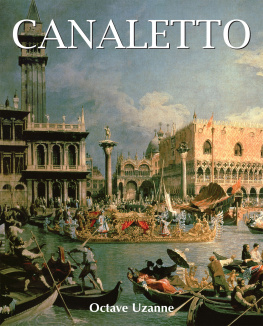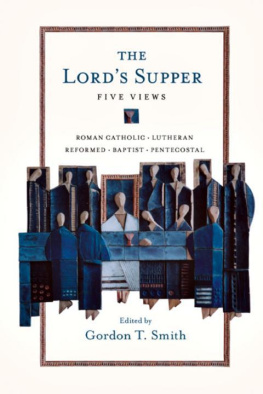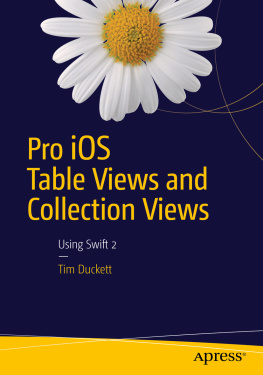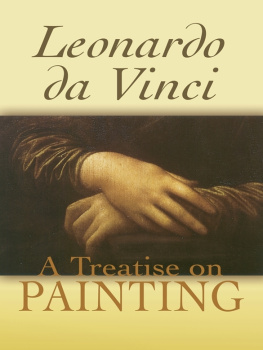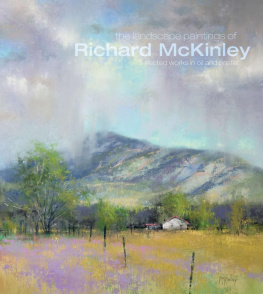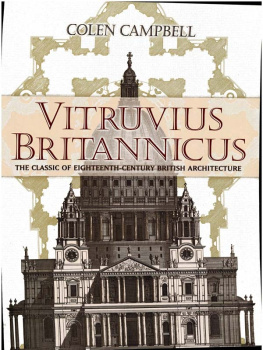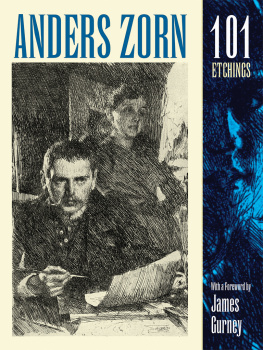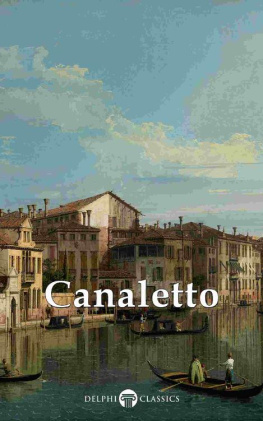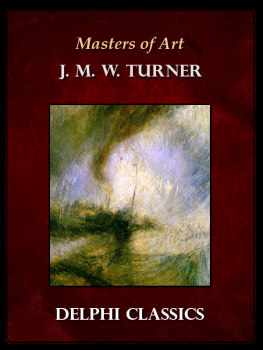Text: after Octave Uzanne
Translation: Barbara Cochran
Layout:
Baseline Co. Ltd.
61A 63A Vo Van Tan St.
Nam Minh Long Building, 4 th floor
District 3, Ho Chi Minh City
Vietnam
Parkstone Press International, New York, USA
Confidential Concepts, Worldwide, USA
All rights of adaptation and reproduction reserved, for all countries.
Unless otherwise noted, photographers who are the authors of the works reproduced herein hold copyright on the same. In spite of our research, it was impossible for us to establish copyright in certain cases. In the event of a claim, please contact the publisher.
ISBN: 978-1-78310-698-1
Octave Uzanne
Canaletto

Contents
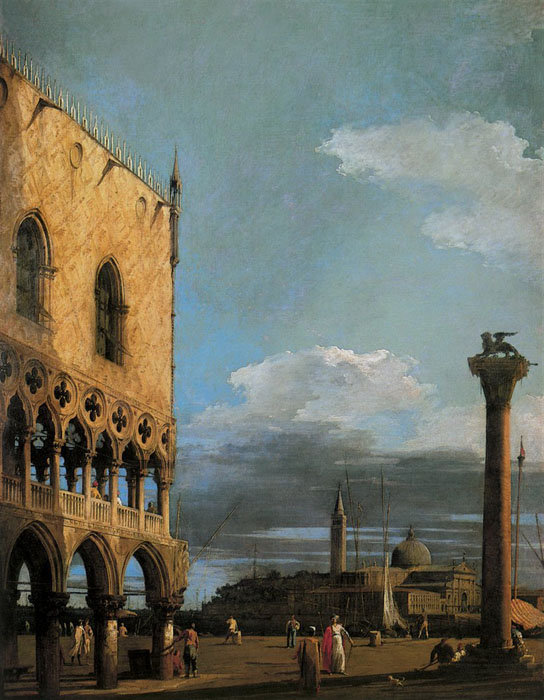
1. Venice: the Piazzetta towards
San Giorgio Maggiore, c. 1724.
Oil on canvas, 173 x 134.3 cm .
The Royal Collection, London.
Alfred de Musset
(1810-1857)
Venice
In Venice the Red,
No boat moves.
There is no fisher on the waters,
No lantern to be seen.
Alone, sitting on the strand,
On top of the serene horizon,
The great lion raises
Its bronze paw.
All around, in groups,
Are ships and rowboats.
Like herons
Resting in circles,
They sleep on top of smoky water
And cross,
With their flags, through the mist,
Caught up in light whirlwinds.
The fading moon
Hides its face that passes away
Against a starry,
Half-veiled cloud.
Then, the Saint Croix abbess
Pulls her cloak,
With the large folds,
Down over her surplice.
And then there are ancient palaces,
Solemn porticoes,
And the knights
White staircases,
The bridges and streets,
The mournful statues,
And the gulf moves,
Rippling under the wind.
All is quiet,
Save the guards with long halberds
Who watch
Through the arsenals crenellations.
Ah! More than one waits
In the moonlight.
Some young dandy
Keeps his ears open.
More than one who adorns herself
For the ball being prepared
Sets down a black mask
In front of the mirror.
On top of her bed, embalmed,
The rapturous Vanina
Is still embracing her lover,
As she drops off to sleep;
And mad Narcissa,
At the back of her gondola
Forgets herself
As she indulges in a feast that lasts till morning.
And who, in Italy,
Does not have a touch of madness?
Who does not save
Their most beautiful days for love?
Lets leave behind the old clock
At the old doges palace,
As they count out the long-lasting boredom
Of his nights.
Instead, my beauty,
Lets count all those many kisses,
Givenor forgiven
On your restive mouth.
Instead, lets count your charms
And the sweet tears
That, in our eyes,
Sensuality has cost!
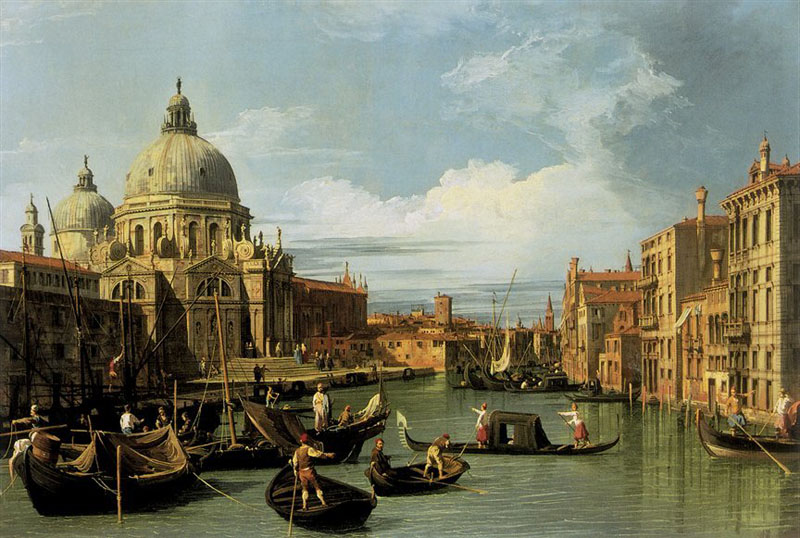
2. The Entrance to the Grand Canal, Venice, c. 1730.
Oil on canvas, 49.5 x 72.5 cm .
The Museum of Fine Arts, Houston.
Venice during the
Eighteenth Century
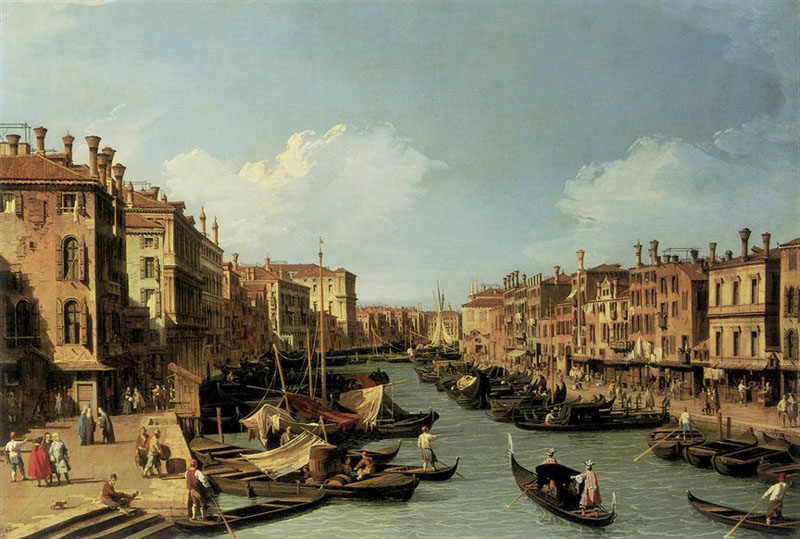
3. The Grand Canal near the Rialto Bridge,Venice, c. 1730.
Oil on canvas, 49.5 x 72.5 cm .
The Museum of Fine Arts, Houston.
Venetian Society
The famous city of Venice holds a special kind of influence over enthusiasts who are passionate about eighteenth century art. Indeed, one is at a loss to imagine a more marvellous setting for such a sensual society, always ready to enjoy life, and not worried about tomorrow. What more dignified atmosphere could so assuredly attract poets and painters? What a theme for the writer whose pen is akin to the colourists brush and the goldsmiths chisel? Seduced by the beauty of this tableau and the lively allure of its characters, Thophile Gautier thought long and hard about how to describe and put new life into the city of Doges with a narrative that would trace the local mores of this exuberant and frivolous population. This novel was often pondered in the masters imagination, but was never written. However, we do find elements of the novel scattered throughout the memoirs of his contemporaries, and we find the same framework in the paintings of Canaletto. With equal interest, one can consult the memoirs of the most informed witnesses, such as Goldoni, Gozzi and Casanova, or, better yet, those by travellers with a trained eye and nimble tongue like Charles de Brosses and Franois Joachim de Pierre de Bernis.
In a light and at times teasing tone, the correspondence of de Brosses offered the most appealing portrait of Italy to eighteenth century society. Departing with several other gentlemen in the spring of 1739, Charles de Brosses, a spirited yet serious man, was determined to make these ten months serve both for pleasure and instruction. At the time, he was thirty years old and had been an adviser since the age of twenty-one. He was gifted with a mental acuity quite rare in young men, adding to his vast knowledge great perceptiveness and extremely sound judgement, to which his letters bear witness. Before occupying the office of principal magistrate, he found Venice so seductive that he thought about asking for the position of ambassador to the Venetian Republic. However, this observation post, located in southern Europe, being rather difficult to obtain, he revoked his candidature and the Abbot of Bernis filled the post fifteen years later.
A good judge of character, and rather difficult to please for this reason, Bernis, during his short mission, knew how to gain recognition for his style of governing, his personal aptitudes and his character. Thus, his memory lived on long after his departure. Having had several disputes with Venice, Pope Benedict XIV turned to him to mediate. Immediately receiving the approval of the opposing party, the future cardinal was able to settle the disagreement between Rome and Venice, satisfying both sides. No doubt, the success of his intervention contributed to his earning the red hat. The dispatches sent by Bernis during his ambassadorship were quite thorough and filled with very fine remarks written in excellent French, pleasing Louis XV. Judging his representative capable of more important services, the king called him back to France in 1757.

4. The Canale di Santa Chiara looking
North towards the Lagoon, c. 1723-1724.
Oil on canvas, 46.7 x 77.9 cm .
The Royal Collection, London.
Before addressing Giovanni Antonio Canalettos life and his work, it behoves us to draw a portrait of his birthplace and contemporaries. This is particularly important because at that time, perhaps more than at any other, art, literature and entertainment shared a joint development. Could one truly understand the origin and progression of the masters talent, his intellectual habits and work methods, without first understanding the society of which he was a member?

